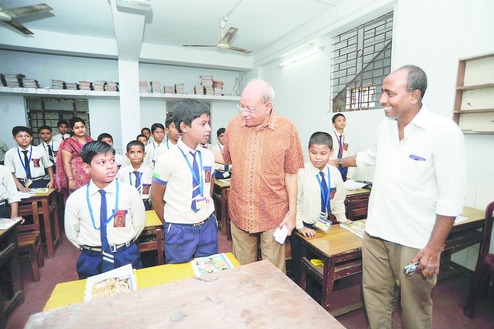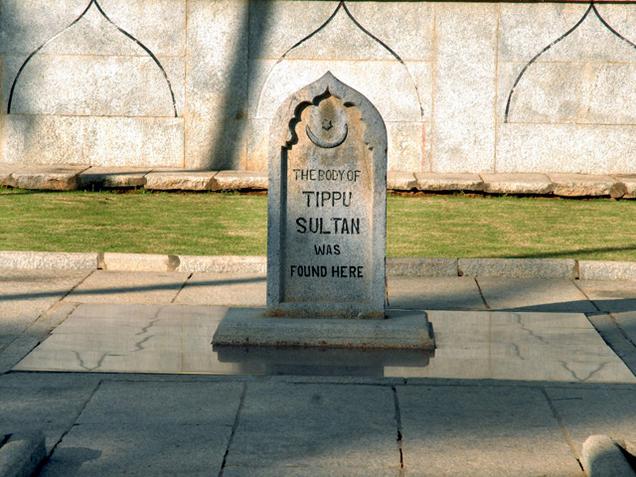– SAMARITAN GIFTS POOR KIDS WHAT HE DIDN’T GET

Mamoon Akhtar was forced to drop out of school in Class VII because his parents couldn’t afford his tuition fees. Three decades later, the 43-year-old from Howrah is the driving force behind a school in Tikiapara with 3,000 students, most of them children of unlettered parents.
Mamoon’s extraordinary journey from victim to champion of the underprivileged started the day he decided that he wouldn’t be deprived of an education just because his family couldn’t pay for his schooling.
“My father was a labour contractor. Our family fell on bad times when his business collapsed and I had to leave school. But I started giving tuitions and continued studying on my own. I would sit for examinations as a private candidate and this continued till Class XII, beyond which I couldn’t progress because my father died and our financial condition got worse,” Mamoon recalled.
Mamoon is the youngest of six siblings, including four sisters. While one of the Akhtar girls went on to get a bachelor’s degree in arts, he is the only one among the remaining siblings to study beyond Class X.
After his father died, Mamoon took up a librarian’s job in a private school in Tikiapara, supplementing his income by giving private tuitions. Life would have gone on as usual but for what was playing at the back of his mind. Try as he might, Mamoon couldn’t get over how he was forced out of school.
In 2002, Mamoon founded a school in Tikiapara with six students. “I would take in nursery-level kids and prepare them for admission to Urdu, Bengali and Hindi-medium schools the next year,” he recounted.
While the initial expenditure on books and furniture was entirely Mamoon’s, help arrived as the queue of parents wanting to put their children in his school grew longer. Caring Friends, a group of philanthropists, came forward to fund the initiative and the aptly named Samaritan Help Mission School hasn’t looked back since.
Homemaker Tara Khatun’s son and daughter study in the school and she couldn’t be happier for the opportunity. “I pay Rs 80 as the monthly tuition fees for my two children. We couldn’t have paid for an English-medium education if this school didn’t exist,” said Tara, whose husband works at a blacksmith’s shop.
Samaritan Help Mission School is in stark contrast to its surroundings – narrow, dingy lanes lined with shanties inhabited by families for whom life is a struggle every single day. The five-storey school building on a three-cottah plot has Wi-fi enabled classrooms equipped with projectors, among other facilities.
“We use projectors for the benefit of some students with impaired vision. It is easier for them to see on the screen than strain their eyes trying to make out what is on a blackboard,” Mamoon said.
The school currently takes in students from classes I to VIII. Younger students are admitted to the Rebecca Belilious English Institution, located around a kilometre away in an area that used to be a den of crime.
The land on which the second school stands had been a garbage dump for years until Howrah City Police and the Howrah Municipal Corporation got together to create a conducive atmosphere for Mamoon to expand his initiative.
“We helped them (Mamoon and his staff) build a wall, remove encroachments and start a school there. Today, many children from poor families get free education there,” police commissioner D.P. Singh said.
Sources said Singh’s predecessor Ajey Ranade played the key role in transforming the place into a site suitable for a school.
After completing Senior KG at Rebecca Belilious English Institution, most children move to Samaritan Help Mission School, which has been adding a class every year.
“We are affiliated to the West Bengal Board of Secondary Education. When the current batch of Class VIII students is ready for promotion, we will start Class IX,” a teacher said.
Both schools run on corporate funding from companies like Chevrolet, Cognizant, Emami, Edelweiss and Tata Steel. Charity organisations like Kolkata Gives and Caring Friends continue to fund several school activities.
Last Sunday, a team of industrialists and businessmen visited the two schools to see the fruition of Mamoon’s dream. R.S. Goenka, one of the founders of the Emami Group, said: “I come here because the school and the kids here inspire me. I also get to see how people are benefiting from our funding.”
The Emami Group has financed toilets and projectors on the main campus while Rebecca Belilious English Institution has an AstroTurf funded by car manufacturer Chevrolet.
Sport is integral to Mamoon’s vision of a school. Samaritan Help Mission School recently acquired a table tennis board and two of its students, Mohammad Sharik and Sonu Rajbhar, got the opportunity to visit Manchester United Club in Old Trafford earlier this month.
“A big company sponsored the trip. The duo were selected from among kids from underprivileged families who have excelled in football,” a teacher said.
Sharik is in Class IV and Sonu is a student of Class V.
For Mamoon, it’s been a tough but satisfying ride since the days when a group of college girls he had enlisted would go around Tikiapara trying to convince people to send their children to school.
“Many people suggested that I turn my school into a Bengali, Hindi or Urdu-medium institute, but I insisted on an English-medium school. Knowing English is very important in the current scenario,” the 43-year-old said.
Scores of parents are grateful that Mamoon stuck to his plan. Sending their children to any other English-medium school in the area would have been 10 times more expensive.
Mamoon’s three daughters – seven-year-old Atifa Fatema, six-year-old Adifa Fatema and four-year-old Batul Fatema – also study at Samaritan Help Mission School. When wife Shabana readies the three girls for class every morning, he can’t help but wonder what life might have been if he weren’t asked to leave school in Class VII.
What is your message for Mamoon? Tell ttmetro@abpmail.com
source: http://www.telegraphindia.com / The Telegraph, Calcutta,India / Front Page> Calcutta> Story / by Subhajoy Roy / Wednesday – September 30th, 2015










